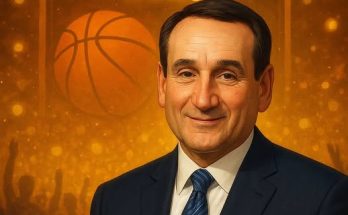Sure! Here’s a full 1500-word article draft titled:
No: What To Know About the First Two Banners in Duke Men’s Basketball
In the illustrious history of college basketball, few programs command the reverence, admiration, and legacy that Duke men’s basketball does. Known for its blue-blood status, legendary coaches, and NBA-caliber talent, Duke’s basketball history is punctuated with iconic moments and unforgettable players. Yet, before the Cameron Crazies became a cultural staple and before Mike Krzyzewski turned the program into a dynasty, Duke basketball had its early foundational moments—two of which are immortalized in the first two banners hanging from the rafters of Cameron Indoor Stadium.
These two banners, often overshadowed by the more recent national championship titles, carry profound significance. They are the pillars of Duke’s rise to national prominence and provide a glimpse into the origins of a powerhouse that would eventually define college basketball excellence. Here’s everything you need to know about the first two banners in Duke men’s basketball history.
Before diving into the specifics of the first two banners, it’s important to understand the context in which Duke’s basketball program began to blossom. Duke University, located in Durham, North Carolina, officially launched its intercollegiate basketball program in 1905. For the first few decades, the program experienced modest success. It wasn’t until the mid-20th century that Duke began to assert itself on a national scale.
The very first banner to go up at Cameron Indoor was the 1960 Atlantic Coast Conference (ACC) Championship banner. This marked Duke’s first significant step toward national relevance in the modern college basketball era.
In 1959, Duke made one of its most critical hires in program history—Vic Bubas. A former NC State player and assistant coach under Everett Case, Bubas brought with him a dynamic vision for Duke basketball. His arrival signaled a shift in recruiting strategy, game preparation, and national ambition. Just a year into his tenure, Bubas led Duke to the 1960 ACC Championship, ending the dominance of programs like North Carolina and NC State, who had previously run the conference.
The 1959-60 Duke team was led by Carroll Youngkin and Howard Hurt, two prolific players who became fan favorites. Their performance in the ACC Tournament that year was dominant, capping off the title run with a thrilling victory over Wake Forest in the championship game.
This title run was more than just a trophy—it was a culture shift. The banner that commemorates this win represents the turning point where Duke started building an identity grounded in discipline, grit, and high-level play.
Just three years later, Duke would hang its second banner: a symbol of the program’s first appearance in the NCAA Final Four. In 1963, the Blue Devils crashed the party of college basketball’s elite, announcing to the nation that they were no longer just regional contenders—they were national threats.
The 1962-63 season remains one of the most important in Duke’s basketball timeline. Still under the guidance of Coach Vic Bubas, the team built on the foundation laid in 1960 and began assembling a roster capable of going toe-to-toe with any team in the country. Duke’s Final Four run was the culmination of a grueling and exhilarating campaign that saw them defeat NYU and St. Joseph’s in the NCAA Tournament before facing Loyola-Chicago in the national semifinals.
Though Duke lost that semifinal to a powerful Loyola team that would go on to win the national title, the experience set the standard for postseason excellence at Duke. The 1963 Final Four appearance validated Bubas’ recruiting strategy, which included going after players outside the traditional southern recruiting grounds—an innovation at the time.
The star of the 1963 squad was Art Heyman, the National Player of the Year, who averaged over 25 points per game. Heyman was a trailblazing figure in Duke history—an emotional leader and fiery competitor who embodied the drive and passion that would later define Duke basketball under Coach K. His play during the 1962-63 season earned him multiple All-American honors and cemented his legacy as one of the greatest players in program history.
These first two banners do more than commemorate specific seasons—they mark the genesis of Duke basketball as we know it today.
Coach Bubas was one of the first college basketball coaches to recruit nationally. He recognized the limitations of regional recruiting and boldly went into New York, Chicago, and the Midwest to find top talent. Art Heyman, for example, was a New York native. Bubas’ aggressive recruiting style laid the groundwork for what would become standard operating procedure for future coaches.
Bubas was also a mentor to many future coaches, and his influence can still be felt today. He brought in younger assistants who would go on to contribute to Duke and other programs. His structured practices, innovative offensive schemes, and calm demeanor became the prototype for future coaching success
The success of the 1960 ACC Championship team and the 1963 Final Four squad helped energize the student body and alumni network. Cameron Indoor Stadium, already a cathedral of basketball, began to take on a new level of mystique. Fans packed the building night after night, creating one of the most intimidating home-court advantages in the country—a tradition that continues to this day.
Today, when people think of Duke basketball, they usually jump straight to Coach Mike Krzyzewski’s five national championships, Christian Laettner’s buzzer-beaters, or Zion Williamson’s thunderous dunks. But none of that happens without the first two banners.
Those early victories gave Duke the credibility to recruit top-tier players, the swagger to compete with elite programs, and the institutional support necessary to build a dynasty. They were stepping stones—humble yet historic—toward greatness.
Even in 2025, as Duke continues to evolve under the leadership of Jon Scheyer, the first two banners remain deeply meaningful. They are daily reminders to the players and coaching staff that greatness doesn’t start with a national title. It starts with belief, hard work, and the willingness to break barriers
Younger players and fans sometimes overlook these milestones, but any trip to Cameron Indoor offers a history lesson. These banners are not just relics—they are teachers. They show that the road to greatness begins with ambition and discipline
In a modern sports world dominated by instant gratification, the story of Duke’s first two banners emphasizes patience and vision. They reflect a time when building a national powerhouse took decades, not just one good recruiting class or transfer portal cycle.
Duke’s first two banners are more than mere decorations hanging in the rafters—they’re foundational. The 1960 ACC Championship proved Duke could conquer its region. The 1963 Final Four run proved it could conquer the nation. These milestones transformed the school’s basketball program from a regional player into a national contender and set the stage for what would eventually become one of the most storied dynasties in college basketball history.
So next time you find yourself in Cameron Indoor Stadium, take a moment to look up. Those first two banners aren’t just fabric—they’re the soul of Duke basketball. They tell the story of a program that dared to dream, dared to build, and dared to become great.
Would you like a version formatted for web publishing or with photos suggested for each section?


